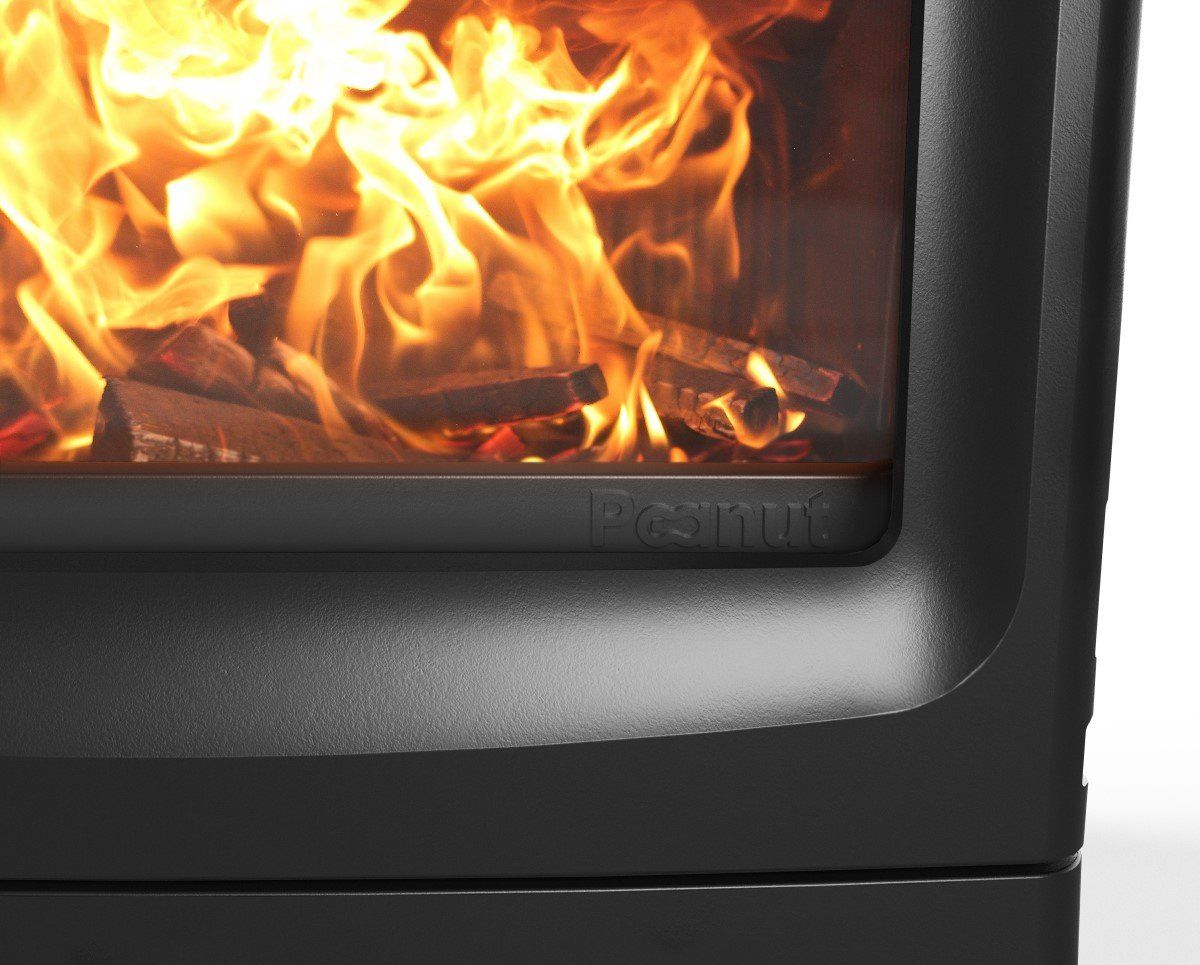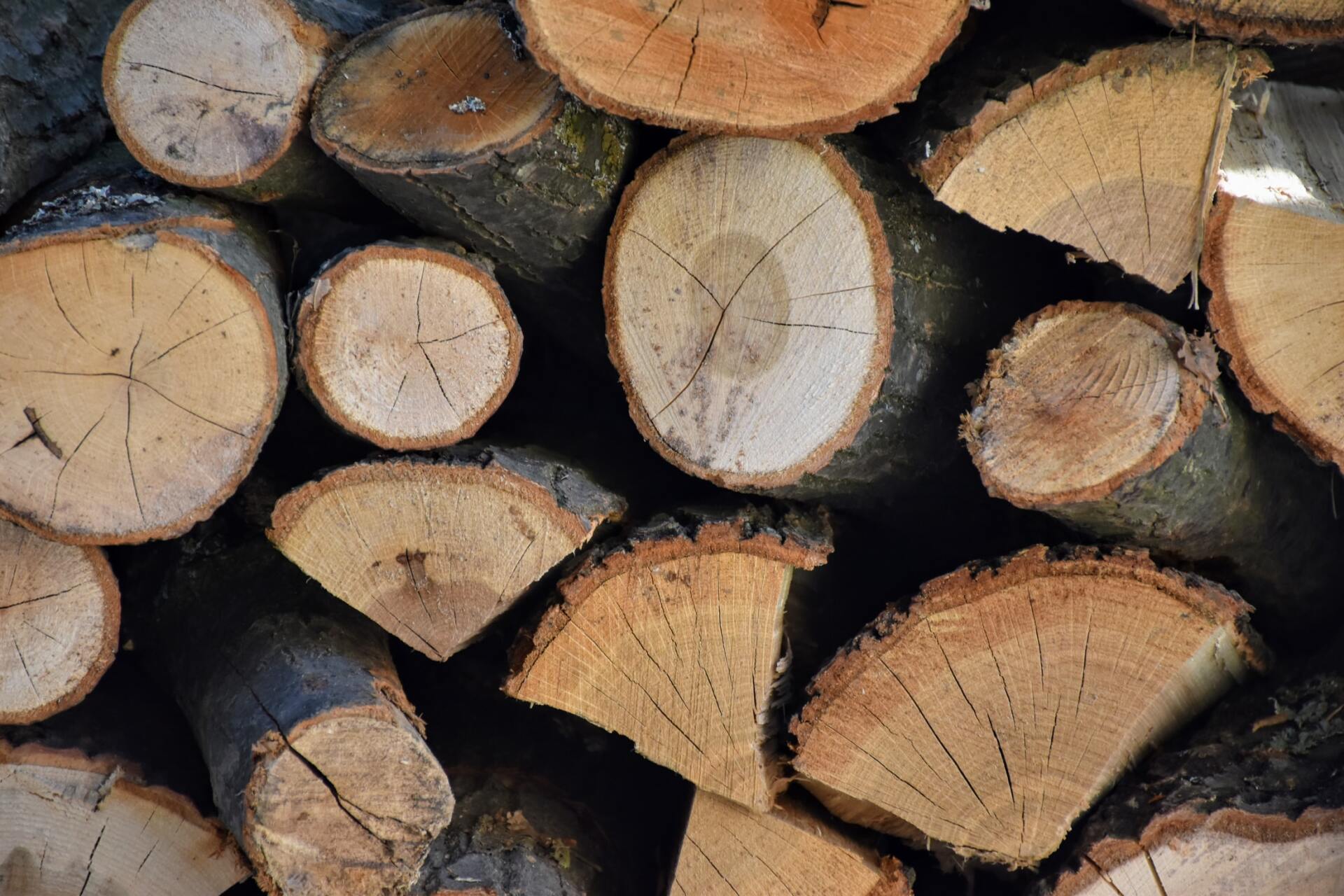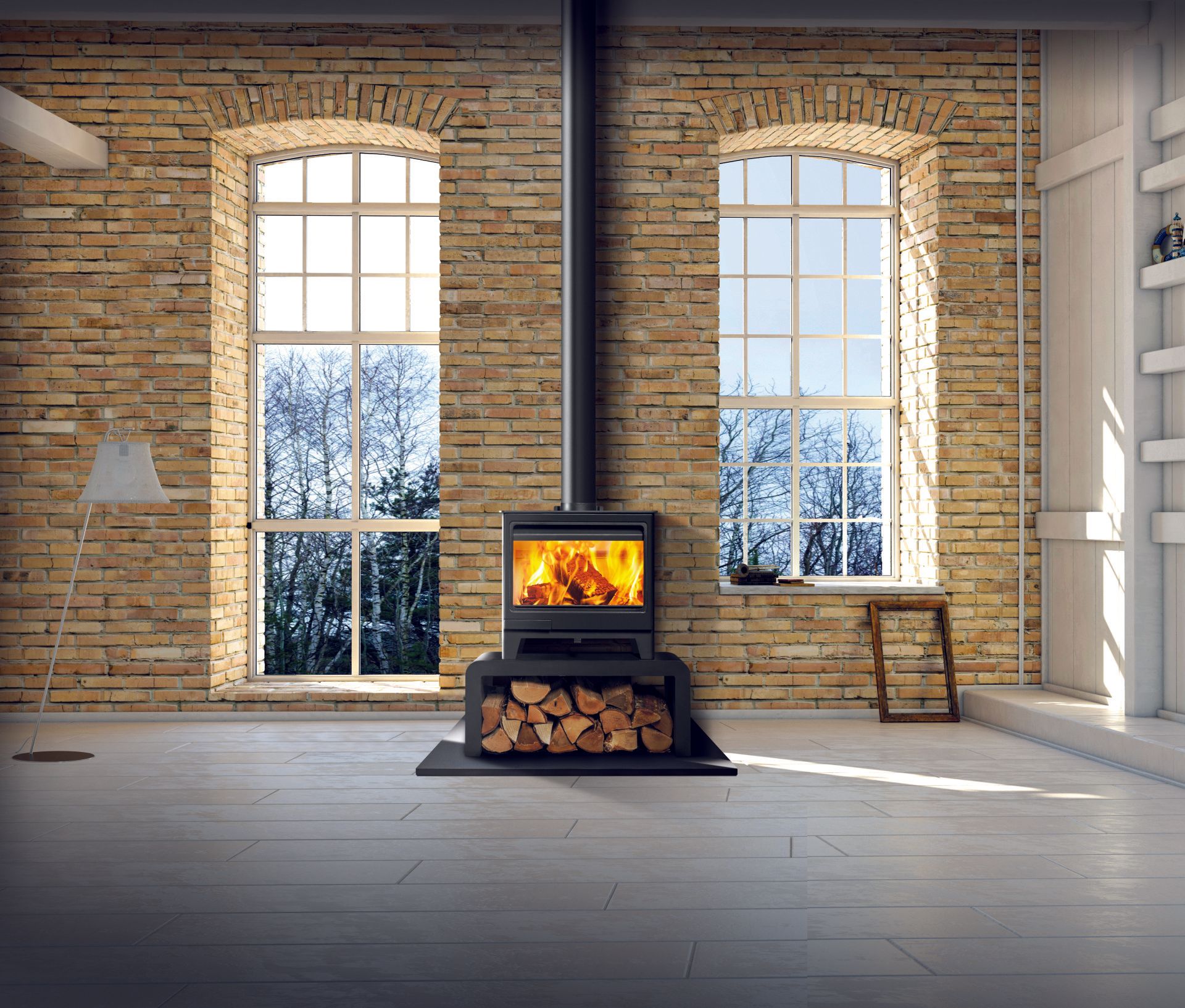A guide for buying & burning wood
Burning incorrect fuel on your new stove will invalidate the guarantee on your stove and pipework, as well as being dangerous. Burning the wrong fuels can cause a build-up of soot, tar, creosote etc. This can lead to damage to the stove and pipework as well as creating a high risk of a chimney fire.
For this reason, we decided to put all of our industry knowledge together to give you a guide on what is best to burn on your fire and how to get the most out of your fuel.
There is a lot of advice out there on what type of wood is best for burning on your stove, and it can get very confusing at times. We have done our best to create a simple, guide to help you choose what’s best for you.
The main thing you should always remember when it comes to burning wood is that all logs must have a moisture content of below 20%.

Ready To Burn Certification
All quantities of wood below 2 cubic metres sold to the general public for the purpose of burning on a woodburner, multifuel stove or open fire by law now has to carry 'Ready to Burn' certification (example pictured above). This means all logs certified as ready to burn contain less than 20% moisture.
Why not fresh wood?
Freshly cut wood has a very high moisture content, when burned it won’t produce much heat and will produce a lot of soot, as well as sticky residues from the sap and smoke. The build-up of residue can cause damage to your stove and pipework, and in many cases prevent them from working correctly. Residue build up can also cause chimney fires.
What is the cheapest way of buying logs?
Bulk bags. Both seasoned and kiln dried are always cheaper when purchased in bulk.
What are seasoned logs?
Seasoned logs are logs that have been left to dry in their own time. At minimum seasoned logs are usually left to ‘lay’ for around 18 months to 2 years. If the logs have not been left to dry for this long, we wouldn’t recommend buying them, as you will find yourself storing them for quite a while before they can be burnt.
What are barn dried logs?
Generally, barn dried is just another term used for seasoned, its just suppliers trying to make it sound better. The only real difference is that there is less risk that ‘barn dried’ logs have been exposed to the elements, as some seasoned log suppliers store logs outside.
What are kiln dried logs?
Kiln dried logs are placed in an industrial kiln where the temperature and humidity levels are monitored to ensure the wood won’t be over dried or under dried. This also speeds up the process, it is possible to kiln dry wood within a week.
Kiln dried logs are often referred to as ‘ready to burn’, this is because generally there is more continuity of the moisture content due to the drying process. All the logs will be below 20% moisture.
What is the difference between seasoned logs and kiln dried logs?
Technically both should be below 20% moisture, however, without a moisture metre, it is impossible to know for sure.
It is quite common for customers to purchase seasoned logs and find that they have a higher moisture content than 20%. Even after being assured that they have been left to ‘lay’ for a minimum of 18 months. This can be for a variety of reasons, but the two most common are;
- Exposure to elements. If you buy your seasoned logs in the summer, they are likely to be drier due to the hot weather. In the winter the logs can be exposed to the foul weather and soak in the moisture from the rain and frost.
- Different woods take different lengths of time to season. Oak, for example, can take over 4 years to season to below 20% moisture. Most companies mix different types of log together so you can find that each log has a different moisture reading.
Many wood suppliers that sell both seasoned and kiln dried recommend leaving the seasoned to lay for up to another 6 months after purchasing before burning it. Even then it is still recommended to use a moisture metre to confirm moisture content before burning.
When it comes to kiln dried logs, the process is very closely monitored, and the logs are ‘ready to burn’ at the point of sale. With kiln dried there is more consistency with the moisture readings and all logs will read with a below 20% moisture reading if they have been stored correctly.
Both Kiln dried and seasoned logs have advantages and disadvantages. The main one being cost. Seasoned logs are generally cheaper. However, are not always ready to burn straight away, so often need storing. If you want to have a log that is guaranteed to be ready to burn, kiln dried is the better option.
Why is storing logs correctly important?
It is important your store logs correctly to protect them from the elements and to stop them sweating.
The following are our tips for storing wood;
- Sunlight.
It is important your logs are exposed to sunlight, especially if the logs are seasoned. Logs stored in the shade will take longer to dry.
- Airflow.
It is important for your log to have good air-circulation, this aids in the drying process and gives your logs the ability to breathe. Logs which don’t have an adequate air flow surrounding them may sweat and re-absorb moisture. If stacking near a fence or wall, leave a few inches behind them. For the best results, a purpose-built slatted log store with gaps for air is recommended.
- Height & Structure
If you aren’t putting your logs in a log store, be careful when stacking them. Make sure the stack is stable and not going to fall on your or your family. We do not recommend log stacks being over a couple of feet high.
- Keep the stack raised.
Where possible do not stack logs directly onto the ground. An old pallet or similar structure is perfect for this. If logs are directly on the ground, they can soak up moisture.
- Covering
It is important to allow your wood to breath; however, it still needs protecting from the elements. The last thing you want is your logs re-absorbing moisture from the rain or frost. The reason we recommend log stores is that they are roofed, but often with slatted sides allowing the logs to still breath. Weather guards are available for the front of log stores, they are usually a mesh type material that hangs over the front. However, not everyone wants or has room for a log store. If you are stacking your logs, cover them with a tarp, leaving the sides of the stack as exposed as possible. Do not wrap the tarp tight, allow the tarp to drape over, coming down the sides by a few inches. Just remember to weigh the tarp down so it can’t blow away.
Wherever you decide to store your logs, make sure that it won't cause a fire risk.
Does that mean I can’t store logs in my shed?
It is not recommended to keep logs stored in a shed, not just because of the storage issues listed above, but also because it can risk termites.
What happens if I burn wet wood?
Most importantly, it is one of the most common causes of stove issues and invalidated guarantees on stoves and pipework.
The other reasons are;
- It won’t light or will be hard to light,
- It won’t burn as hot, most of the energy produced goes on burning away the moisture, producing excess smoke, soot, tar and creosote which is highly flammable and causes chimney fires. So, you will go through more wood trying to get heat, and produce a hazard.
- Very unfriendly to the environment due to the high emissions it produces.
If you purchase wet wood, it is best to store it and not burn it until you can get a moisture reading below 20%.
Types of Wood
We are often asked which types of tree produce the best logs and which to avoid. We have put together a small list of the big ones;
Avoid the following wood types:
- Pine & Conifers
These woods can cause problems for the stove and pipework due to a build-up of sticky residue.
- Willow & Holly
Do not burn well at all and have a very low heat output.
- Laburnum
This tree is poisonous and produces fumes.
Be aware of the following when burning:
- Cypress
Burns quickly so if you want to burn this wood, it is best to mix in with other longer burning types.
- Chestnut
This isn’t the best wood to burn as it doesn’t put out the same amount of heat as other types.
- Birch
This is another fast burning wood type; however, they burn with good heat output. Like many in this list, it is best to mix in with other longer burning woods.
Best types of wood to burn;
- Beech
This wood takes longer to season due to its naturally high moisture content. However, when properly seasoned or kiln dried, it burns well.
- Cedar
Burns well with lasting heat output.
- Yew
This wood has a high heat output with a long burn time.
- Elm
Again, this is another wood type that naturally has a high moisture content, so takes longer than average to season. It burns slowly but with good heat output. Best mixed with faster burning woods.
- Oak
This wood takes a long time to season but is generally considered the best wood to burn. It has a long burn with high heat output.
- Maple Trees
These burn well with moderate heat output, if you want high heat, best to mix with both fast and log burning logs.
Generally, any trees that naturally have a high resin content are best to be avoided, as well as those that burn very quickly. All logs must be at a minimum seasoned, so they are below 20% moisture, however, for the best heat output & efficiency, it is always best to burn kiln dried logs.
Always avoid any woods that have been treated in any way, such as painted wood, pallet wood, MDF etc. This is not suitable to be burnt. It will produce nasty fumes and damage your stove and pipework. It will also invalidate any guarantee your stove carries.
If you have any further questions about burning wood, please feel free to ask a member of our team and they will do their best to help you.










